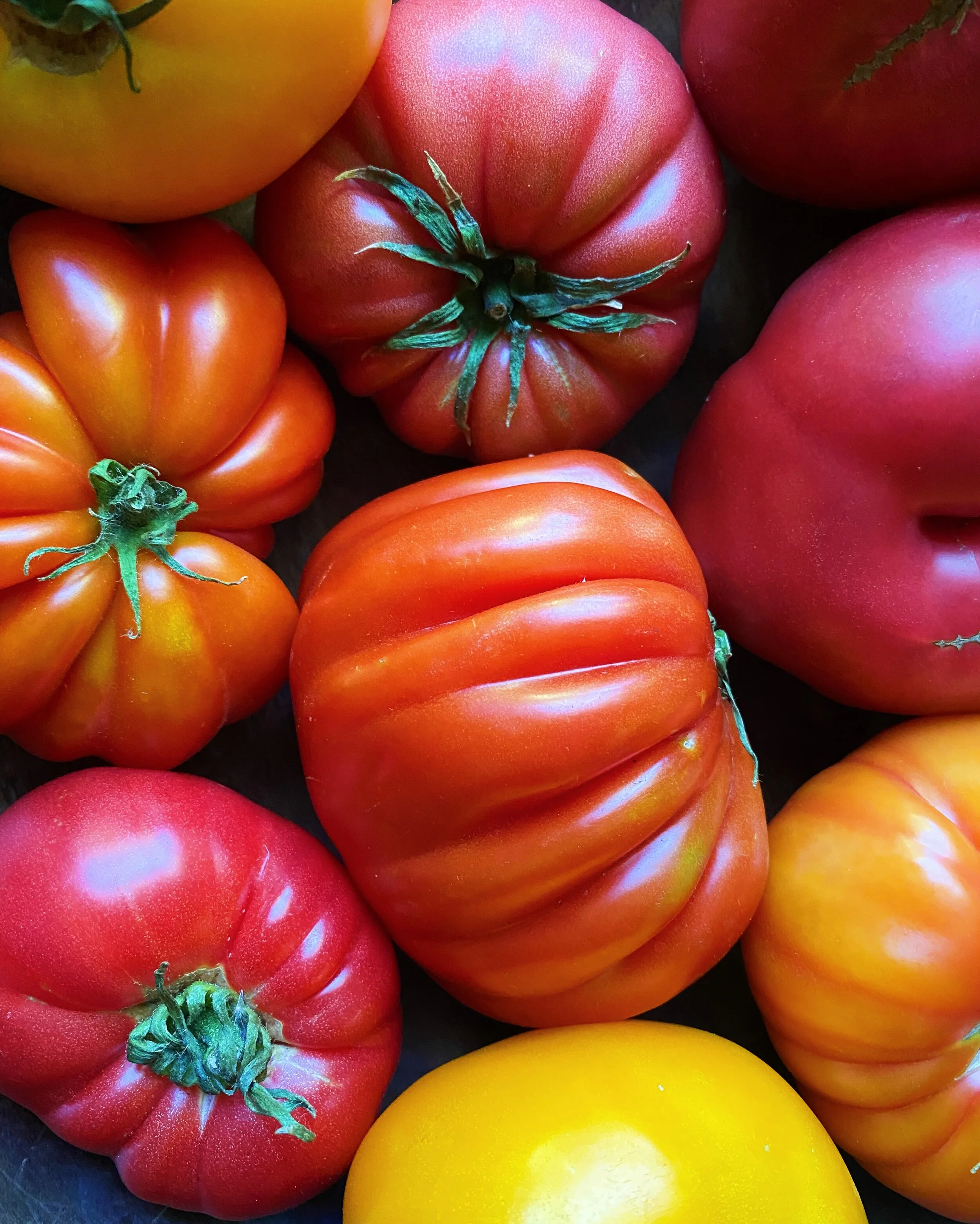Luscious Heirlooms Add Color and Curiosity to Tomato Displays
For many, summer is all about stone fruit and berries. For others, corn. But for eaters that prefer a trickle of tomato juice down their chin over peach juice, the season of sun-warmed fruit is all about the Heirlooms.
Originally cultivated in Mexico and South America by the Aztecs and Incas, early varieties made their way to Europe via Spain in the 16th century. Though Native Americans and the Creoles of New Orleans had long incorporated these gorgeous tomatoes into their cuisine, it wasn’t until the 1800s that they were grown and eaten by more North Americans.
Traditionally favored by at-home gardeners, many Heirloom varieties eventually took a back seat to commercially available hybrid tomatoes bred for thicker skin and more shelf-sturdiness, making them easy to distribute as the country’s rail infrastructure expanded. However, by the early 1900s, popular hybrid tomatoes had begun to lose both flavor and the favor of consumers, reinvigorating eaters' interest in “old world” varieties.
Through the work of seed libraries and farmers willing to take a chance on some unusually shaped tomatoes, Heirloom varieties began winning the hearts and palettes of eaters again.
Now commercially available in exciting colors and sizes, from organic Purple Cherokee to German Stripe and everything in between, Heirloom tomatoes are the go-to choice for many eaters.
Entice shoppers to pick up a few different Heirloom tomatoes at a time by creating a visually stunning display that incorporates numerous shapes and different shades. A friend to other seasonal favorites like basil, corn and even nectarines, there’s endless cross-merchandising opportunities with seductive Heirloom tomatoes!

